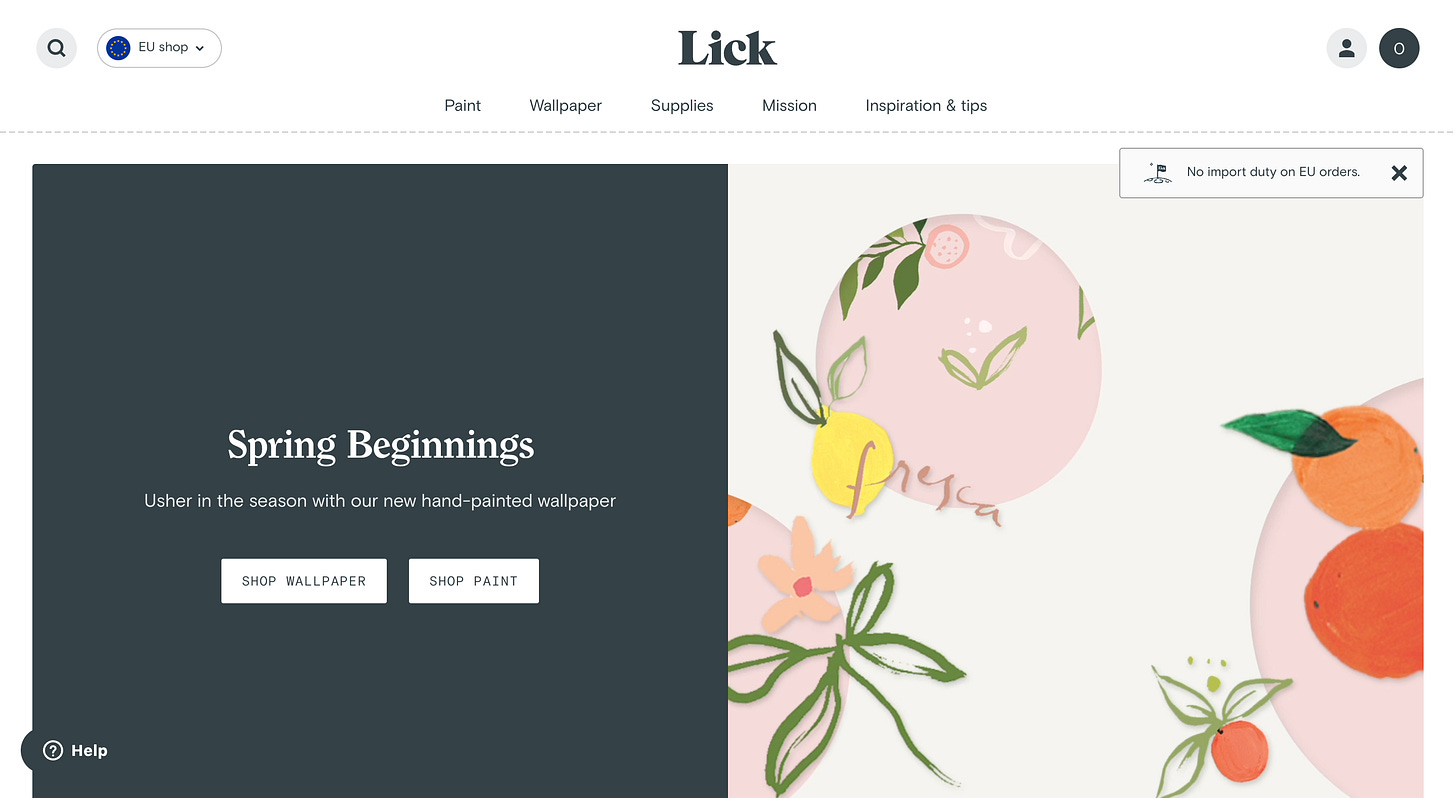How Would We Personalize Lick’s Online Store to Create Tailored Experiences
91% of consumers are more likely to shop with brands that recognize, remember, and provide relevant offers and recommendations.
In this case study, we'll show you how we would personalize the customers’ experience on Lick’s online store to create better experiences by adding recently viewed products based on visitors’ behaviors.
Before diving into the personalization, let's look at who Lick is:
Lick
Lick is a home decor brand that is helping people transform their homes with ease.
In their own words, Lick defines itself as a community-powered decorating movement that builds decorating confidence by inspiring and supporting all decorators with their projects.
The Background of the Personalization Journey
On its product pages, Lick has:
detailed product descriptions
community inspirations
recommended products
Although Lick has all these components and customer touchpoints, it doesn't have a recently viewed products component on its product pages and home page.
We believe that there is a huge opportunity lying under 'recently viewed products' because of creating a 1-1 personalized experience by improving the product navigation.
The Opportunity
If someone is interested in buying a certain product from Lick’s online store, why not make it as easy as possible?
Lick can do this by adding the "recently viewed products” component to its online store. This will allow customers to be able to see which items have been viewed recently.
In other words, these are the products they showed the most interest in.
Adding 'Recently Viewed Products' Personalization to Lick’s Online Store
Step 1: The Tech Stack
To create personalized recently viewed products, Lick needs to leverage zero-party and first-party data they have.
Moreover, in order to create the best possible personalized experience, we'll source all of the data points made by the same visitor under one merged profile - whether the user is signed in or not.
In this way, all website behavior will be stored under the same profile, allowing Lick to create a seamless personalization experience for its visitors.
For this personalized experience, Lick will need the following tech stack:
GraphCMS as a headless CMS
Shopify as a commerce solution
Step 2: Defining Hypothesis and Methodology
It's no secret that browsing is an essential part of shopping. We all browse around stores, searching for the best products and clicking different products over and over again.
Wouldn't it be helpful if there were some gentle reminders for visitors?
If a visitor has already viewed a product, then the visitor has shown interest. And if the visitor has shown interest, s/he is more likely to purchase the product. Therefore, it makes sense to show visitors' recently viewed products.
You might think that this is a simple solution, but it's actually used by some of the biggest names in online sales, like eBay and Amazon - and has proven to be very successful.
91% of consumers are more likely to shop with brands that recognize, remember, and provide relevant offers and recommendations.
Therefore...
We hypothesize that by displaying a visitor's recently viewed products, Lick may remind them of what they've previously expressed interest in, increasing the likelihood of them clicking through and making a purchase.
Step 3: Defining Personalization Signals
To create a seamless customer experience with personalized last seen products, we'll use the following signals:
Products Viewed: The previous activity allows personalizing where the user left shopping via showing recently viewed products.
Step 4: Personalization Journey
To create the personalized version for Lick, let's define our visitor’s hypothetical personalization journey:
A visitor lands on Lick’s website.
Then the visitor visits a product. In this case, 'White 01 Matt Paint.’
Next, the visitor goes to another product page: 'Green 07 Matt Paint.’
Before leaving the page, the visitor scrolls down to the "Recently Viewed Products" section.
After that, the visitor checks another product: 'Multi-Room Painting Kit.’
On this page, the visitor scrolls down and sees the "Recently Viewed Products" section.
The Result: Before vs. After
So far, we have talked about the hypothesis, methodology, which signals to use, and required technology stack.
Now let's look at the visuals to better understand it.
As we defined earlier, the visitor checks three different products. On the second product page, the visitor sees the following screen:
After that, the visitor checks another product. On this page, the visitor scrolls down and sees the following "Recently Viewed Products" section:
Finally, the visitor checks another product and sees the following screen:
The Bottom Line
Personalization is a continuous journey, which means that once one implementation is completed, companies will return to the beginning of the framework to analyze acquired data, discuss new ideas, hypothesize further improvements, and so on.
Through continuous learning and experimentation, this strategy enables various teams
content marketing,
growth,
product management,
development
to create meaningful personalization experiences.








